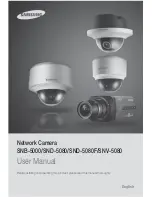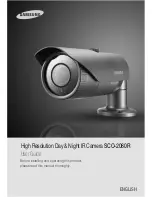
SAFETY
SAFETY
Check the local weather forecast, (radio, web,
harbor crew). How strong are the winds and from
which direction?
You must know how the speed of the wind and
the direction are going to evolve during the day.
You should not ride during stormy weather, the
kite may attract lightning!
Also check on the tides schedule and the areas
for rip currents.
Do not fly your kite without a proper safety
system allowing you to instantly reduce the
power of the kite and without a safety leash
connecting you to the kite once you have killed
the power, this leash should also be releasable in
case of an emergency.
Frequently check the wear and tear of your safety
systems. Do not wait for trouble to learn how to
operate your safety systems. Chose a wide open
area to practice your release of the kite.
Choose your spot according to your level
The choice of a good spot is a prerogative for a safe
learning. The best spot is not necessarily the spot
where you find the most kites. If you just started or if
you do not control your kite properly, the best spot is
often the least crowded one.
The water and wind conditions also vary, advanced
kitesurfers often look for strong wind and good
waves where beginners should be looking for calm
waters and softer winds. When first starting out it is
recommended to look for a place with fairly shallow
waters.
Choose an obstacle free area
Check that the space on your sides and downwind
from you is free of obstacle: no houses, no trees, no
cars or jetties.
Under no circumstances should you be riding near
electrical posts and wires, or near an airfield or even
near a harbor.
Wind direction
Never ride in strong offshore wind. The wind can die
at any moment or a line can break. In offshore wind
it is harder to swim back to shore, the wind and the
current pushing away from the beach.
It is not recommended to ride when the wind is on-
shore especially for beginners as the wind pushes
directly onto the beach. This will make your learning
harder: you will not be able to do good runs and go
up wind, and you will end up on the sand very quickly.
This will also be more risky as any gust could send
you onto the sand and your kite may fall violently onto
the sand.
Therefore always ride while the wind is side or side-
on, this will let you go downwind while keeping a safe
position in case of an emergency.
The area down the wind
Be cautious and check that there are no obstacles
going down wind. You should always consider room
for error. Keep in mind that the risk is to go down
wind, beginner or not.
There is always a risk of breaking a line, losing your
board, or breaking your harness… therefore the
beach down the wind should always be accessible.
Think that you may have to walk back alongside the
beach (check that there are no rocks, cliffs, fences, or
jetties blocking your way).
If you are just starting out or if you cannot entirely
control your kite, be careful as to where you stand
on the spot: if the spot is big enough, it is better to
stand upwind from other kites to avoid crossing your
lines with theirs. It is less tricky for you and them, this
will allow you to concentrate on your flying and less
on others.
Put away your material
Be careful not to unwind your lines on top of
others’. The same applies when you put down
your kite, be careful not to do it on top of someone
else’s lines. This can become hazardous if
he or she re-launches his or her kite without
noticing your lines.
If you leave your kite on the beach, to get some
rest or just waiting for better conditions, think of
rolling up your lines on your bar to clear up the
spot. Disconnect the lines from the kite if you are
going to leave the kite on the beach unattended.
Avoid the kite at the zenith
Avoid if possible staying with the kite at the
zenith while you are still on the ground, better to
take it down in order to get some rest. This could
be hazardous for you and the others: you are not
safe from a sudden lack of wind or a strong gust
that could pull you away.
On the ground or the beach, falls are harder and
they hurt. Your kite at the zenith can also disturb
the others from landing and launching their kites.
Help out others
Always keep an eye on your surroundings, and
pay attention to others. Do not hesitate to help
out others launching and landing their kites,
or going after a struggling kitesurfer.
Respect the priority on the water
When two kitesurfers are passing each other, the
one closer to the wind origin should raise his kite
and the kite surfer under the wind should lower
his kite to avoid a tangling of the lines.
When two kitesurfers are facing each other, the
kite surfer riding with the wind coming from
starboard (right hand forward) according to the
path followed has the priority over the kite surfer
who’s wind comes from port side (left hand
forward).
The kitesurfer riding starboard should maintain
his or her trajectory and the one riding port side
should move further down the wind in order not
to cross their paths.
Before any jumps or direction changes, make
sure there is enough room and that you are not
going to cross anyone’s path.
Respect bystanders
Inform the spectators of the power of the kite
and of the potential risk by staying downwind
from a kite surfer.
Do not lend your equipment to a none kitesurfer.
RULE N°4 - CHECK THE WEATHER CONDITIONS
RULE N°6 - LEARN TO USE YOUR SAFETY SYSTEMS
RULE N°3 - CHOOSE YOUR PRACTICE SPOT
OBSERVE LOCAL LAWS & REGULATIONS REGARDING KITESURF AND AUTHORIZED AREAS.
RULE N°5 - RESPECT & HELP OUT OTHERS
FRANÇAIS
ENGLISH
16
17































